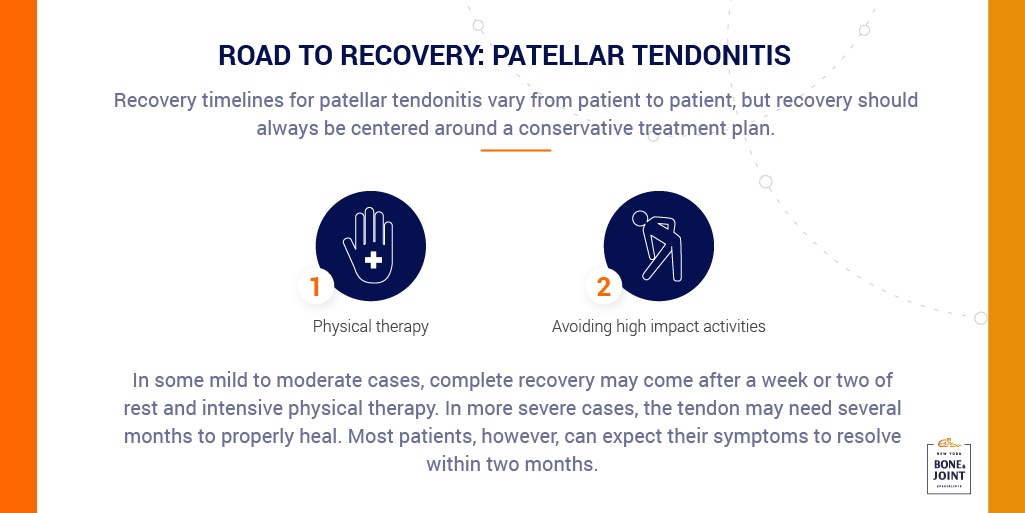WHAT IS PATELLAR TENDONITIS?
Patellar tendonitis is an inflammation of the patellar tendon, the piece of connective tissue which joins the kneecap and the shin. Often referred to as “jumper’s knee,” the condition is most commonly caused by prolonged stress or overuse of the tendon, but in rare cases, it can be the product of acute trauma. Jumper’s knee most often occurs in sports that require frequent bending and flexing of the knee, such as basketball and volleyball, but the condition can affect anybody.
PATELLAR TENDONITIS SYMPTOMS
The most common symptom of patellar tendonitis is a burning pain around the kneecap. Some patients also experience stiffness, redness, and, in rare cases, swelling in the joint. These symptoms become more pronounced when attempting to bend or extend the knee.
PATELLAR TENDONITIS TREATMENT

Patellar tendonitis can be diagnosed with a simple physical examination. After locating the injury, your orthopedic specialist will likely take an X-ray to locate any bone spurs or other skeletal defects that might be responsible for the inflammation, as well as an MRI to evaluate any degeneration in the patellar tendon.
Like most forms of tendonitis, patellar tendonitis can be effectively treated with some conservative measures. Aside from resting the knee and refraining from running and jumping, icing, anti-inflammatories, and physical therapy can all promote a quicker recovery by alleviating pain and swelling. Some patients may also benefit from iontophoresis, a treatment in which a topical corticosteroid medication is applied to the joint. After the inflammation subsides, regularly stretching the knee and wearing a supportive brace or strap can strengthen and reinforce the tendon, reducing the risk of future irritation.
These conservative courses of treatment should provide mild to significant relief within several days, and most cases of patellar tendonitis should resolve completely in three to four weeks. Depending on the extent of the damage, however, complete recovery may require as long as six to eight months.
PATELLAR TENDONITIS SURGERY AND RECOVERY TIME
Surgery
While most symptoms of patellar tendonitis can be resolved with the conservative treatments described above, some rare cases may need to be treated surgically. While surgeons have historically relied on open surgery to remove the damaged portions of the tendon and mend any tears in it, arthroscopic surgery is becoming an increasingly common alternative. Your orthopedic surgeon will choose the appropriate course of action based on your specific injury, guiding you through every step of the procedure and recovery process.
Surgery Recovery Time
Recovery timelines for surgically repaired patellar tendons vary from patient to patient. If complemented by a rigorous physical therapy program, complete recovery may come in as little as a week or two for mild to moderate cases. Meanwhile, more severe cases may require several months for the tendon to properly heal.
_________________________________
EXPERIENCING PAIN? DO YOU HAVE AN INJURY?
Our Specialists are here to help.
Book an appointment with NYC’s best orthopedic specialists to discuss your condition. Fill out the form below and you will receive a call from our office within 5-10 minutes. We’ll book an appointment at a time and location that work for you, and send you a reminder by email.












